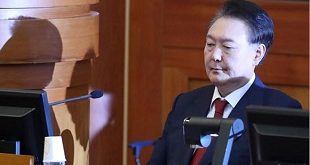Innovation often comes from introducing insights and tools from a different domain. Maybe TB behaves more like cancer than like other infectious diseases. Daryl Drummond – a vice president of Merrimack Pharmaceuticals and one of the innovators behind the only second-line treatment for pancreatic cancer approved by the US Food and Drug Administration – told me that the lung lesions from a TB infection “share a marked similarity with solid tumors.” In fact, he explained, “the TB granuloma has many of the pathological features of cancer: hypoxia, a necrotic core, fibrous collagen at the outer rim, the development of a surrounding capillary network, and the presence of phagocytic cells.”
If Drummond is right, those engaged in the fight against TB could look for ways in other branches of medicine to shorten treatment duration, lower dosing frequency, reduce side effects, lower costs, and improve compliance, all at the same time. Drummond added, “We are finding ways to achieve these things in oncology.”
Unfortunately, commercial innovation is slow to respond to TB. As World Bank President and PIH co-founder Jim Yong Kim points out, “If you look at the three major killers – HIV, tuberculosis, and malaria – the only disease for which we have really good drugs is HIV. The reason is simple: there’s a market in the United States and Europe.”
TB, by contrast, is often thought of as a “third-world” or poor person’s disease. Some of the most profitable and powerful pharmaceutical companies in the world, AstraZeneca and Pfizer, have left that “market” behind.
Tony Fauci, Director of the U.S National Institute of Allergy and Infectious Diseases, which, since 1984, has helped to lead successful global efforts against HIV and Zika, takes a different perspective. “Collectively,” he reminds us, “we should be paying more attention to what is going on around us in the world among people who don’t have the advantages that we have.” North Americans and Europeans need to lift their fingers out of “the greasy till of commerce” and see the end of TB as a challenge to our collective humanity.
It has certainly been a challenge to many of history’s greatest artists and activists. Henry David Thoreau, Eleanor Roosevelt, George Orwell, Franz Kafka, Louis Braille, Wallace Thurman, and Simón Bolívar struggled with or against alienation, isolation, and injustice. They all died of TB.
Nelson Mandela was diagnosed with TB while serving his 27-year prison term in a dank cell. Two liters of fluid were drained from his chest, and he recuperated in a hospital that had never treated a black patient.
If such eminent people contracted TB today, how fast could our governments and corporations find a cure? How many of the 400,000 children who die from TB each year could grow up, fight for social justice through art, activism, and commerce, and inspire the rest of us to do the same?
****
Michael C. Fairbanks was a Peace Corps teacher in Western Kenya in 1979. He is Chairman of the Board of Silver Creek Medicines in San Francisco, and a fellow at the Weatherhead Center for International Affairs at Harvard University.
****
Copyright: Project Syndicate, 2017.
www.project-syndicate.org
 The Independent Uganda: You get the Truth we Pay the Price
The Independent Uganda: You get the Truth we Pay the Price



